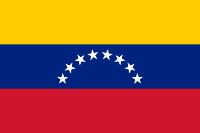
Photo from wikipedia
For a quantitative biogeographical regionalization, the choice of an appropriate dissimilarity index to measure pairwise distances is crucial. Several different metrics have been used, but there is no specific study… Click to show full abstract
For a quantitative biogeographical regionalization, the choice of an appropriate dissimilarity index to measure pairwise distances is crucial. Several different metrics have been used, but there is no specific study to test the impact of metric choice on biogeographical regionalization. We herein applied a hierarchical cluster analysis on the mean nearest taxon distance (MNTD) and the phylogenetic turnover component of the Sørensen dissimilarity index (pβsim) pairwise distances to generate two schemes of phylogenetic regionalization of the Chinese flora, and then evaluated the effect of metric choice. Floristic regionalization based on MNTD was influenced by richness differences, but regionalization based on pβsim can clearly reflect the evolutionary history of the Chinese flora. We provided a brief description of the five regions identified by pβsim, and the regionalization can help develop strategies to effectively conserve the taxa and floristic regions with different origins and evolutionary histories.
Journal Title: Plant Diversity
Year Published: 2020
Link to full text (if available)
Share on Social Media: Sign Up to like & get
recommendations!